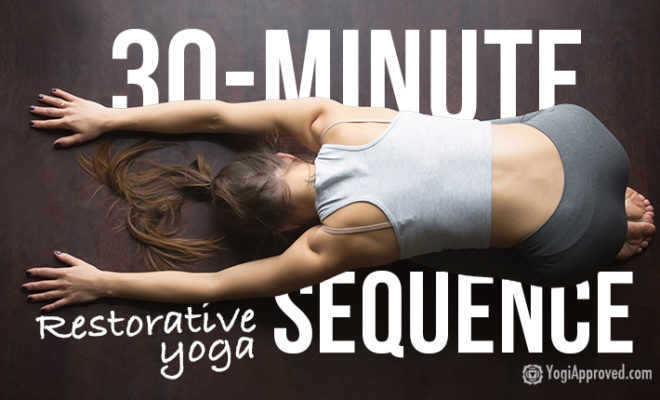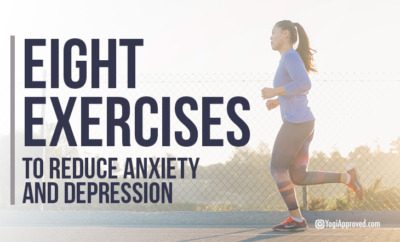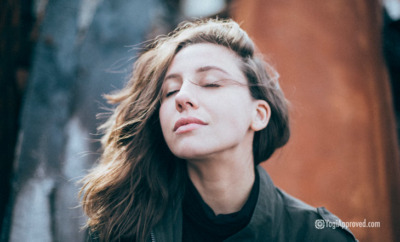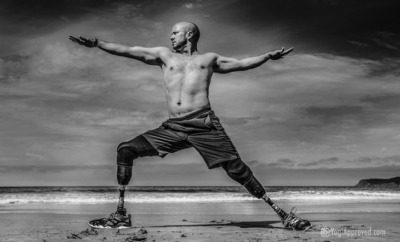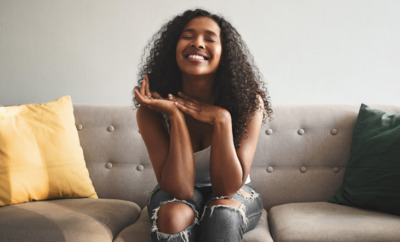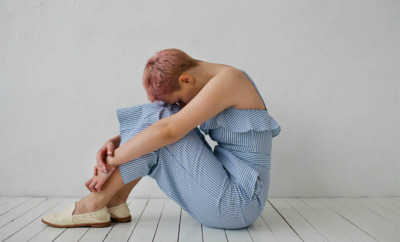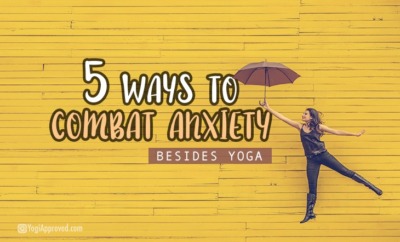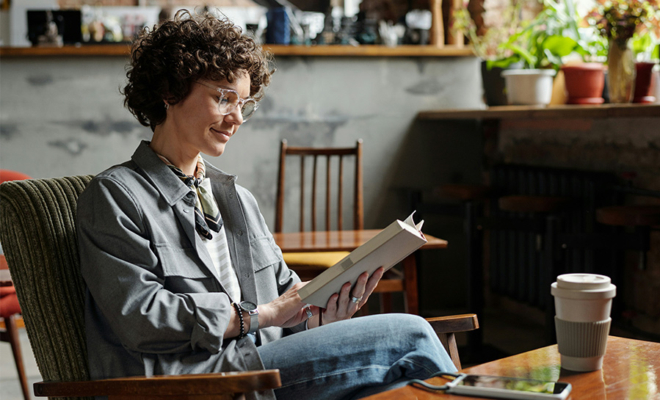Do You Or Someone You Know Struggle With Addiction? Here’s How a Yoga Practice Can Help
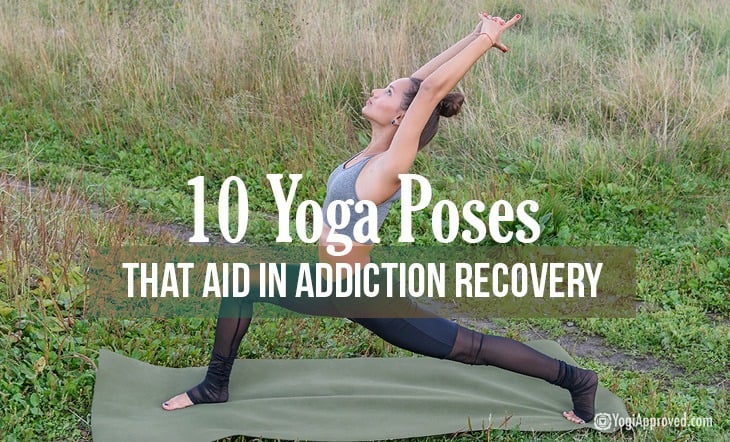
addiction recovery
Addiction is a serious condition and can happen to anyone. But it’s important to remember there is always hope, and recovery is never out of reach. While we applaud those who admit their addiction and move towards recovery, addiction is still, unfortunately, a taboo subject.
As Anna Forrest states in her novel, Fierce Medicine, “It takes a lot of courage to explore your fear.”
First, Let’s Define Addiction
The first step to addiction recovery is admitting you have a problem, but the underlying requirement is that you understand the definition of addiction. Yoga instructor and recovering addict Taylor Hunt describes addiction as, “an allergic reaction that is an obsession of the mind . . . wanting more, and more, and more.”
Extreme substance abuse addiction like Taylor’s is easy to identify, but other forms of addiction are less so. There’s a certain fluidity between addiction, obsession, habit-forming, and compulsive behaviors.
It takes a lot of courage to explore your fear.
We can be addicted to anything: social media, television shows, Diet Coke, our partners, fast cars, etc. Whatever the addictive pursuit may be, addicts cannot refrain from doing, thinking, or using their addictive behaviors to get what they seek.
When faced with the prospect of stopping these addictive behaviors, addicts will justify, make excuses, obsess, crave, use in secret, and isolate themselves so that they can fulfill their addiction. Ask yourself, “Can I stop using the behavior for one week?” If the answer is no, you’re likely using addictive behaviors to satisfy an addiction.
What are you addicted to?
The Importance of Remaining Present to Help Addiction Recovery
Addiction is based on an overwhelming urge to either promote or inhibit certain sensations which are felt (often subconsciously) as physical reactions. Our yoga practice teaches us to be present and not avoid feelings or emotions that arise.
Acceptance and Commitment Therapy, or ACT, is a treatment style that merges well with yoga principles. This type of therapy incorporates mindfulness practices with behavioral strategies that align with the changes and values the individual seeks to accomplish.
Yoga calms the nervous system and relaxes our muscles and mental synapses even when our addictive nature is triggered.
In our physical yoga practice, when we commit to a pose, we’re asked to remain present in often uncomfortable sensations for mind and body. Learning how to remain present and working through the discomfort of addictive behaviors can help many people break free of them.
How Radical Acceptance Plays a Role in Recovery
When you intelligently discern your pain and choose behavior strategies outside your addictions, you invoke radical acceptance of yourself and your situation. Radical acceptance requires that the acceptor be calm and focused enough to identify their fears without giving in to fight or flight tactics and reverting to addictive behaviors.
Yoga calms the nervous system and relaxes your muscles and mental synapses even when your addictive nature is triggered. There are many yoga poses and pranayama exercises that can be practiced at any time to calm the mind and remain focused on changing our behavior from addictive habits towards recovery.
Identifying Destructive Habits
Once you’re truly addicted to something, you use the same behaviors again and again to fulfill this addiction. You obsess constantly about the pursuit and therefore increase your destructive habits.
Yoga helps reveal your physically and mentally destructive habits. Backbending poses may be difficult because you’re asked to open your heart when your mind and body constantly closes the heart space in an effort to “protect” yourself. Or maybe you never try new yoga poses because you don’t believe in your own abilities.
Continuing to work on remaining present will help bring these destructive habits to the surface. Once they are discovered, you can move toward accepting them, and then work toward new behaviors that will aid in addiction recovery.
Building Confidence is Essential for Addiction Recovery
Insecurity is often the root of addictive behaviors. Commit to a regular yoga practice so you can watch and feel yourself progress with the poses. This can be a vital step on your way to addiction recovery.
Lucas Rockwood of YOGABODY provides an eloquent description of the importance of building confidence to recover from addictions. Rockwood states, “Gaining skills builds confidence, which builds pride, which builds excitement, which builds this virtuous positive circle of practice . . .”
When we’re working to overcome addiction, each minor achievement reaps a huge reward and keeps us motivated to stay on the road to recovery.
Connect to Yoga to Aid Your Recovery
When you seek help for addiction, many treatment facilities and providers now prescribe yoga as a treatment method. Beginning a yoga practice has helped many people face their addiction, prevent relapse, reduce withdrawal symptoms, and relieve stress from potential addiction triggers.
The essential ingredient to experiencing transformation through yoga is desire.
The yoga community is packed with different yoga styles. And since we’re often isolated in our addictions, it can be beneficial to attend public classes or connect with a yoga community. Don’t be discouraged if you try one class or style and you don’t immediately connect. Keep trying different classes and teachers until you find what works best for you.
According to Yogani, author of Advanced Yoga Practices, Easy Lessons for Ecstatic Living, the essential ingredient to experiencing transformation through yoga is desire. As long as you’re willing to step onto your yoga mat time and time again, you’ll move forward on your journey in recovery.
If stepping into a yoga studio or yoga class is intimidating, don’t worry. You can still commit to a regular, manageable home yoga practice to begin the road to addiction recovery.
Here are 10 Yoga Poses and Practices to Begin Your Transformation and Aid in Addiction Recovery:
1. Spinal Breathing Pranayama
Most yoga practices start with a basic breathing exercise to promote intuitive mind-body connections. Beginning a pranayama practice will help keep your mind calm and focused on the present moment, which will be helpful in changing addictive behaviors.
Let’s try it:
- Start your practice seated in a comfortable position in a chair, on the floor, or on a meditation cushion
- Rest your hands on your knees with your palms down and eyes closed
- As you inhale, imagine a white light at the base of your spine and slowly begin to pull the light up your spine
- When you exhale, imagine the light melting back down the spine toward your tailbone
- Continue this breathing technique for at least 10 breath cycles
To learn more about Pranayama and different breathing techniques you can use, check out Pranayama explained and 5 Techniques to Get You Started.
2. Fish Pose
Fish Pose is a great stretch of the thoracic spine, the chest and the shoulders, and is also a great heart opener. In ancient texts, Fish Pose or Matsyasana was referred to as the “destroyer of all diseases” and helps relieve anxiety and stress.
Let’s try it:
- Begin on your back with your legs extended and your feet together
- Lift your chest and shoulders and rest on your forearms – palms remain flat
- Begin to move the hips closer to your elbows to create a bend in the spine and allow the crown of your head to rest on the mat
- Lift your right hip and place your right hand under your hip, then lift the left hip and place the left hand under your left hip
- Your intention is to bring your pinky fingers to touch just below your glutes
- Remain here for 5-10 full breaths
3. Yogi Bicycles
Yogi Bicycles are a great movement to build heat in the body to prime our muscles for the following yoga poses that focus on lengthening the muscles. Yogi Bicycle movements also provide a great way to fire up our solar plexus chakra, which manages our confidence levels.
Let’s try it:
- Begin on your back and interlace your hands behind your head, allowing your elbows to come out wide
- Bend your right knee and squeeze it into your chest, keep your left leg extended and relaxed on the mat
- Inhale to lift your head, shoulders and chest off the ground
- Exhale and bring your left elbow to meet your right knee – really focus on the twist here
- Inhale and come back to center and switch legs
- Then, exhale and bring the right elbow to touch the left knee
- Repeat this side-to-side action and move as slowly as possible to feel the connection in your body
Looking for more core work? Check out our free core strengthening class.
4. Downward Facing Dog
Downward Facing Dog is a wonderful yoga pose to find grounding as well as stress relief. Downward Dog gently strengthens and lengthens your muscles to not only strengthen your physical body, but also help release mental and physical tension.
Let’s try it:
- Begin in Table Top Pose
- Walk your hands about six inches in front of you
- Keep your palms planted as you tuck your toes and lift your hips up and back, making an upside-down “V” shape with your body
- Press through the index fingers and thumbs to take the pressure off your wrists
- Draw your shoulder blades away from your ears by externally rotating your shoulders and spiraling your biceps toward the front of your mat
- Release your heels toward the ground to stretch your calves, ankles and hamstrings
- Relax your head
- Hold for 10-15 breaths then slowly return to Table Top Pose
Want more guidance or a quick and thorough refresher for your Down Dog alignment? Check out this free Downward Facing Dog video tutorial.
5. Low Lunge
Low Lunge helps stretch the hip flexors, psoas and groin – all places we tend to hold much of our emotional trauma. Low Lunge can be a gentle stretch or more intense stretch, depending on your body in this particular moment. Focus on each exhale and invite your hips to open and tension to release.
Let’s try it:
- From Downward Facing Dog, bring your right leg forward until your right knee is stacked directly on top of your ankle
- Rest your left knee on the ground to help feel the stretch through the front of the left thigh and hip
- Keep your hands on the ground framing your front foot, or extend your arms skyward
- Keep your spine lengthening skyward, your core active and your shoulders relaxed
- Repeat on the other side
6. Warrior I
If you’re struggling with deep-seated emotions and/or tightness around your hips, thighs, calves, and lower back, Warrior I can really test your ability to stay present when faced with discomfort. Use Warrior I to help you build the strength to remain present when triggers or stressors arise so addictive habits do not take over.
Let’s try it:
- Begin in a Low Lunge with your left leg extended back
- Lift the left knee and bring the left foot closer to the left edge of your mat
- Turn your left foot to a 45 degree angle so the front toes face the upper left corner of your mat and the left heel faces the back right corner
- As you inhale, lift your upper body and raise your arms above your head
- Your intention is to have your hips and shoulders square to the front of your mat
- Keep pressing the blade of your left foot into the mat
- Hold for a few breaths
- Repeat on the other side
7. Sage Twist
Sage Twist is a great yoga pose to detoxify the negative energy within your organs and spine. By compressing and twisting the internal organs, Sage Twist enhances stimulation of the nervous system, helps calm the mind and also reduce tension.
Let’s try it:
- Begin seated with your legs extended in front of you
- Inhale to sit up tall and lengthen your spine
- Bend your right knee and plant the right foot next to your left thigh
- Holding on to your right knee with both hands, exhale and twist your torso toward the right knee
- To add intensity to the twist, bring your left elbow to the outside of your right knee and keep your left palm open and fingers spread wide
- Plant your right hand behind your back and press it down to invite your spine to lengthen and your chest to lift
- Pause for a few deep breaths and repeat on the other side
8. Pigeon Pose
Pigeon Pose is the ultimate hip opener to release blocked energy or stored emotions within the body. Pigeon Pose can bring these emotions to the surface and give the yogi the opportunity to face them and then let them go. Anna Forrest calls Pigeon Pose a “great soother of the nervous system,” so embrace what comes up and invite the mind and body to let it go.
Let’s try it:
- From Downward Facing Dog, bring your right knee behind your right wrist and rest it on the mat
- Allow your right foot to cross to the left side of your mat
- Release your hips to the mat and keep your left leg extended towards the back of the mat
- Bring your right heel toward your groin for a less intense stretch
- Square your shoulders and hips to the front of the mat – feel free to place a blanket or block under your right hip if needed
- Check your left leg to be sure there is no sickling in the foot (if your foot turns inward so the ankle bulges out)
- Once you find a balanced position, inhale deeply to lengthen the spine and lift the chest
- Then exhale as you bring your palms to the mat in front of you, your forearms on a block or your forearms to the mat
- Hold for at least ten deep breaths, then repeat on the other side
9. Legs Up the Wall Pose
Legs Up the Wall Pose is an amazing posture to find relaxation in the mind and rejuvenation in your body. Spending time in Legs Up on the Wall Pose increases circulation in the body and helps relieve anxiety and depression.
Let’s try it:
- Begin in a fetal position with your hips as close to the wall as possible
- Gently roll onto your back and extend your legs up to rest the back of your thighs on the wall
- Adjust your hips closer to the wall if that provides more comfort
- Extend your arms out wide, drape them by your hips, or rest them on your belly
- Stay here for 5-10 minutes
- Slowly roll back to a fetal position when you are ready to release
10. Corpse Pose
Even though you are lying down, Corpse Pose can easily be the most difficult yoga pose listed here. The stillness and silence can be much more difficult than any physical movement. But if we are to discover our true selves and the root of our addiction, Corpse Pose could be the key to our recovery.
Let’s try it:
- Begin reclined on your back
- Allow your legs to extend in front of you and be completely relaxed. Invite the feet to open naturally
- Rest your hands by your side with the palms facing up
- Close your eyes and find a neutral breath, allowing your body to fully relax, soften, and sink into the mat
- Remain here for 5-10 minutes
- Focus on your breath. Allow any thoughts or sensations that come up to be released, and always go back to your breath
Tips for Your Yoga Practice:
- Try to hold the poses for at least three breaths. A good rule of thumb is to hold a pose for one more breath than you think you are able. As you practice, you’ll be able to increase the intensity
- Pay close attention to the sensations that come up during your practice. What feels good and/or bad physically? What thoughts arise?
- Watch your habits and thought patterns unfold while you practice, sit in them, and then choose to move through them in a compassionate way
Yoga and Addiction Recovery: The Takeaway
Regardless of your type of addiction, you have the power to replace your commitment to obsessive thoughts with a commitment to healing yourself. As Anna Forrest says, yoga helps us let go of the old stories that have chained us to our past so we can move into the uncharted territory of our future.
If you’re honest about the sensations in your mind and body and give yourself a chance to break free of your habits, you will discover the truth of a bright, addiction-free world. Yoga can help you on this path.
This article and all included information is not intended as medical advice and does not treat or diagnose. Please consult your doctor for any health-related questions or concerns.


This Month's Letter
From the Editor
Monthly motivation and food for
thought from our founder.

